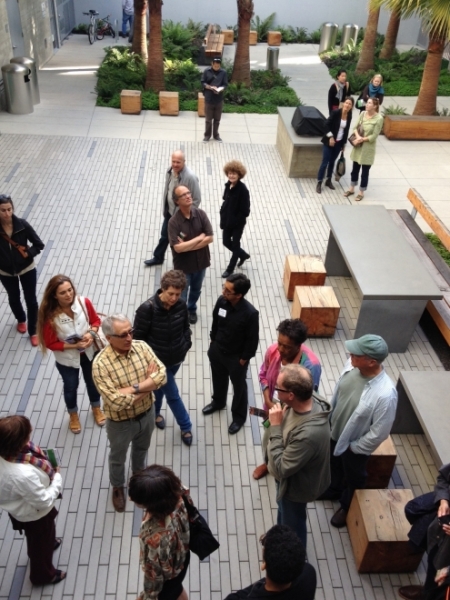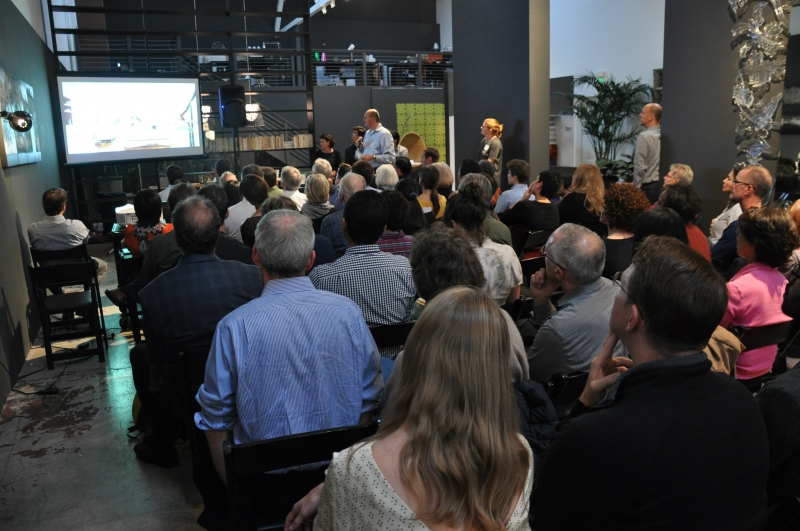AIA SF and the Center for Architecture + Design Executive Director Margie O’Driscoll calls the San Francisco Architecture and the City Festival (now in its 10th year), “inspiring, collaborative, and discovery-driven.” Read how the festival’s modest beginnings have grown and developed to become one of the nation’s largest architectural events.
This year marks the tenth anniversary of San Francisco’s Architecture and the City Festival, a 30-day celebration of urban design and planning that is shaping up to be bigger and better than ever. Presented by AIA SF and Center for Architecture + Design, the festival kicks off September 1st and packs the rest of the month full of tours, lectures, film screenings, exhibitions, special events, and family programming centered around this year’s theme, Unbuilt San Francisco. Announces the festival's website, “Our city’s architectural heritage consists not only of the buildings and spaces we see and touch, but also the structures that were never built and the plans that never came to be. The 2013 festival theme will explore this parallel history of our city.”
AAO recently sat down with AIA San Francisco and the Center for Architecture + Design Executive Director Margie O’Driscoll to discuss the Festival’s evolution over the past decade, favorite features past and present, and tips for organizations hoping to throw their own such events.

“Planning a festival is like cooking a great meal,” O’Driscoll says. “The ingredients – your content – has to be interesting; you have to anticipate what your audience desires, as well as what they don’t yet know they want; you have to have something unexpected to keep it lively; and you have to have a sense of humor because something (or multiple things!) will not go as planned!”
_______________________________________________________________________________
Margie O’Driscoll’s Top Tips for a Successful Festival
1. Pick presenting partners you enjoy working with; life is too short not to enjoy a collaboration.
2. Choose a media partner that brings something to the table (cocktails are always great!).
3. Use a theme everyone can form an idea about, without having to have it explained or sold to them!
4. Collaboration is all about communication. Email is great to confirm details but horrible for creativity.
_____________________________________________________________________________
The Architecture and the City Festival began humbly in 2004 with about 15 events within the span of one month. AIA SF and the Center for Architecture + Design worked with a number of community partners with whom they had already formed relationships, and only added activities that they had previous experience managing. “We kept the festival focused on high quality, unusual programming that was targeted at the general public.” O’Driscoll said, adding that it wasn’t until the events sold out and the public clamored for more that they felt they could expand and take more risks in planning. “Our advice to most others just starting out is to keep it modest in Year One,” she said. “A festival, by its very nature, can quickly become overwhelming. Now, at the conclusion of the festival, we spend time analyzing each program and considering whether it ought to be included the following year.”
O’Driscoll is most proud of how much of the city the festival aims to cover. Says O’Driscoll, “Our Home Tours program juxtaposes the amazing residential design in wealthy neighborhoods with the creative design for our city’s low income housing, which is aligned with our organization’s core values.” The program allows the public to witness the way design has permeated San Francisco to make creative use of space and experiment aesthetically in every corner of the city.
The biggest changes O’Driscoll has noticed in architecture festivals nationwide since the birth of her own have been positive ones: events that the Architecture and the City Festival helped create have popped up as staples in the programming of other groups, like architectural bike tours and food and design tours, denoting the spread of festival innovation far beyond the City by the Bay. Also, the increase in production of architecture-themed films over the last decade has given curators the luxury problem of having to choose which films to screen.
“Festival attendees expect, and receive, high quality programming in fantastic venues -- nothing about the festival can be ordinary,” said O’Driscoll, when asked about the effect the festival has on the public. “They know they will see and learn something new about the built environment: by rediscovering a neighborhood they thought they knew on a tour, seeing some of the best residential architecture in the country, or hearing an architect who challenges how they think about design."
“What I love most about this festival is what it does for our community. Each year we work with 50-100 partner organizations. For some of the partners, the festival is the only architecture-related event they will participate in all year; others think about architecture 24/7. Some of our audience members are drawn to attend because of our cross-collaboration with their favorite nonprofit…and then they discover other events that interest them….and then they keep coming back.”

Be sure to catch the Architecture and the City Festival this September if you are near San Francisco. Starting with an opening night party on August 30th at interactive media agency Obscura Digital (culminating with the announcement of the winner of the 280 Freeway Competition), the festival offers events nearly every day of the month. Check out their website at www.archandcity.org for more information!

